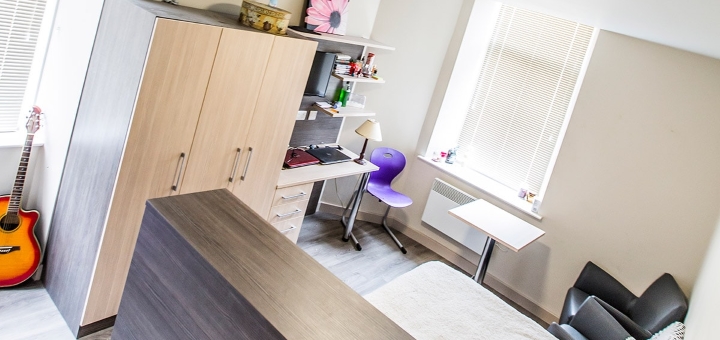How smart design is helping landlords fill their student properties

Just like fashion, interior design is always changing − what was trendy a couple of years ago could now be seen as outdated and overused. This evolution of design is a constant battle for landlords who need to appeal to prospective tenants, but especially so when it’s students that they’re trying to attract.
When it comes to student properties, it’s about more than remaining in trend and fresh − it’s also about creating an environment which will help boost productivity and relaxation.
Discovering what does and doesn’t work when designing properties is a big part of being a landlord.
Here, we’ve looked into how, through smart design, landlords can create the best possible spaces for their tenants and fill their properties as quickly as possible and in time for the start of each academic year.
Create living spaces for socialising
When students aren’t studying, they’ll be found socialising and unwinding. Cater to this need by taking great consideration over communal spaces and really try to understand how people can get the most out of them.
Whether it’s a common room, reception area or living room, look into how you can make it the hub of all social activity, whilst also remaining functional.
If you don’t have much space to work with, invest in a variety of different chairs and tables in order to create a sense of community, whilst vibrant colours and unique designs will also help the space stand out.
Attempt to create a space for when guests come over to visit, but that can also be used as a place for revising and relaxing in solitude.
Create areas that enhance productivity
Your tenants will want space to study, so if you create an environment that’s unorganised and cluttered, chances are it won’t appeal to them during property viewings.
Provide stylish coffee tables, but also include desks or beds that incorporate shelves and drawers. This way, there’s plenty of storage space, but it won’t take up all of the room. End tables and bookshelves will also help boost productivity by creating an environment people will want to study in.
Lighting is key too. The World Green Building Council found that exposure to natural light helps to increase productivity by 18 per cent, so look into how you can light up the property with windows and open spaces.
Customising space with storage nooks and built-in work spaces will help create a spacious environment that allows for personalisation and making people feel comfortable.
Every colour creates a different mood
Have you ever considered the psychology behind design? The colours you choose will have an effect on the overall mood and environment of the property, so have a think about how you want it to feel.
Blue is the most productive colour, so should be used in areas designed to be working environments. Using red will symbolise power and create a warm, relaxing environment, but when overused it’s proven to be counterproductive as it’s also an aggravating colour.
Yellow is associated with happiness and works well with natural lighting, but you need to be careful of how you use it, as it can work negatively with computer light and cause fatigue.
Think strategically about how you use colours and how they complement each other. When you overuse colours, you run the risk of creating a negative environment.
Keep an eye on trends
In the ever-growing interior design market, it’s vital that you stay on top of what’s in vogue. Accommodation must be adaptable based on the individual needs of students − in this industry, one size can’t fit all.
Amenities such as gyms, onsite shops or even just an information desk area show you have gone out of your way to offer something which stands out as the best. Whilst we may not all be able to provide an onsite gym, keep an eye on emerging trends and look at different ways you can provide something extra for your tenants.
Little things can make a big difference. Whether it’s widescreen televisions or modern kitchen accessories, showing you have gone the extra mile can really help make the student’s decision much easier. Recognisable brands will also show you have put the effort into create a functioning property, without cutting on costs.
Create an environment people want to live in
When all’s said and done, you want to create a living space that not only looks great, but also fully functions as an area for productivity and relaxation. Invest in furniture and accessories that will set the right tone and look for things that stand out visually, and you will have a property which students will want to live in.
Article by Student Furniture, who provide contemporary furniture pieces and design solutions for student accommodation across Europe.










Very interesting read, there definitely is a lot in a good interior design. Thinking not only about what will be aesthetically pleasing but considering both practically and outside the box as to what the space will be used for is important. Consulting a professional to achieve that perfect combination is definitely worth the while.